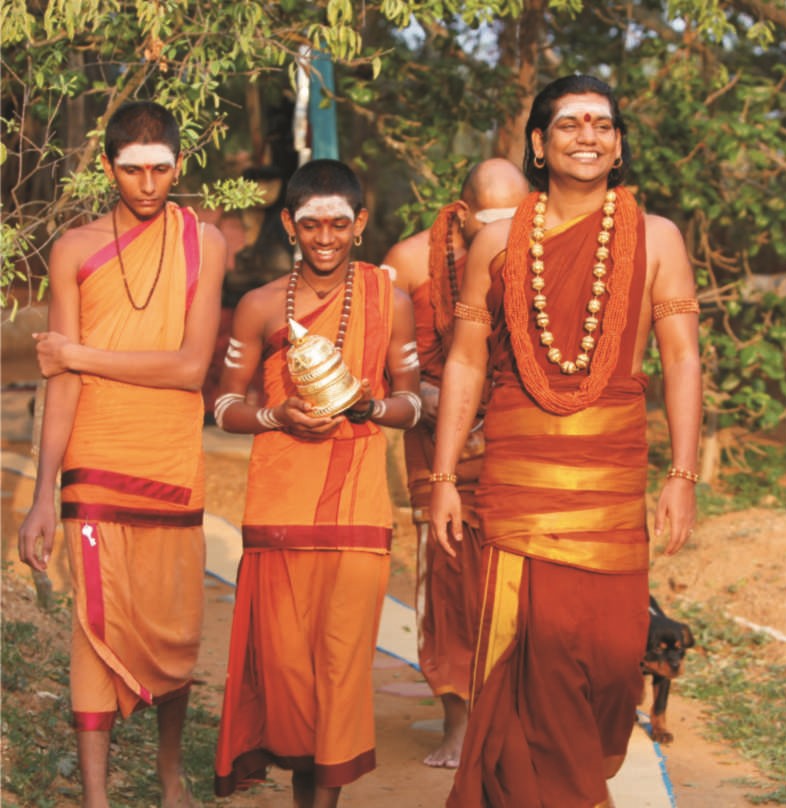Gurukul setup since the time of the Rigveda, is the ancient educational system in India underwent a progressive transformation, with a strong emphasis on the comprehensive growth of individuals. It encompasses their internal and external aspects. It centred around cultivating moral, physical, spiritual, and intellectual dimensions of life. Further, stressing values like modesty, honesty, self-discipline, self-sufficiency, and reverence for all living entities. Students required guidance to acknowledge the harmony between humanity and the environment. With teaching and learning practices guided by the principles of the Vedas and Upanishads. These teachings aimed to fulfil responsibilities to oneself, one’s family, and society, effectively encompassing all spheres of life.
This education system concurrently prioritized cognitive development and physical well-being, emphasizing the importance of a sound mind and a healthy body. In essence, the Indian educational tradition has a rich history of being practical, attainable, and in harmony with the fabric of everyday life.

Vedas and other Scriptures: Sources of Education
The traditional education system primarily revolved around the teachings of the Vedas, Brahmanas, Upanishads, and Dharmasutras. Familiar names such as Aryabhata, Panini, Katyayana, and Patanjali are well-known in this context. Their works and medical treaties authored by Charaka and Sushruta constituted significant sources of knowledge and learning. It’s important to note. Their literary contributions, in conjunction with the medical treaties composed by Charaka and Sushruta, is highly regarded as substantial fountains of knowledge and erudition. It is noteworthy to emphasize that a discernible demarcation existed within this system.
Physical education constituted a vital segment of the curriculum, where students actively engaged in various activities such as games and recreational pursuits (krida), exercises (vyayamaprakara), martial skills training, including archery (dhanurvidya), and the practice of yoga for mind and body development (yogasadhana), among other pursuits. The Gurus (teachers) and their students collaboratively dedicated themselves to attaining expertise in all facets of knowledge.
To evaluate the progress of their students’ learning, organized debates known as “shastrartha” were held. In addition, more advanced students took on the role of mentors, guiding their junior counterparts. This system also encouraged peer learning, fostering group and collaborative work, similar to contemporary group projects.
Mentioning:
auṁ saha nāvavatu | saha nau bhunaktu | saha vīryam karvāvahai |
tejasvi nāvadhītamastu mā vidviṣāvahai || auṁ śāntiḥ śāntiḥ śāntiḥ ||
AUM. May we both (the guru and the disciple) together be protected, nourished and enriched with knowledge. We both work with great strength, energy and enthusiasm. May our study and learning illumine us with sharp, absolute light of higher intelligence. May we both not have enmity or incompletion with each other. AUM. Let there be Peace (in my inner space). Peace (in the nature). Peace (in the Divine forces). ~ Yajurveda, taittriya upaniṣad 2.2.2
asato mā sad gamaya | tamaso mā jyotir gamaya| mṛtyor mā amṛtaṃ gamaya||
Lead me from the unreal to Reality, guiding me through the darkness to Enlightenment, from death to Immortality – the pavamana mantras (great purifiers) ~ Brihadaranyaka Upanishad.
Gurukuls- Disciplinary way of ancient living
Ancient India had a multifaceted education system that included formal and informal avenues of learning. Further, Indigenous education administered within households, temples, pathshalas (small learning centres), tools (traditional schools), chatuspadis (centres of learning for specific disciplines), and gurukuls (teacher residences) was prevalent. In these settings, individuals within families, communities, and temples help guide young children to embrace virtuous life principles.
Temples, in particular, served as significant hubs for knowledge dissemination and actively supported the promotion of our ancient educational heritage. As students progressed in their educational journey, they often attended viharas (monastic centres) and universities to acquire higher knowledge. The predominant mode of instruction was oral, with students relying on memory and reflection to internalize the lessons imparted in their classes.
Gurukuls, also known as ashrams, served as residential centres of education. Many of these institutions were named after revered sages and were typically located in tranquil forest settings, offering a serene and peaceful environment. Gurukuls hosted numerous students who learned together. It’s worth noting that education was accessible to women during the early Vedic era, and there are references to notable female Vedic scholars, including Maitreyi, Viswambhara, Apala, Gargi, and Lopamudra, among others.
During this period, gurus (teachers) and their shishas (students) lived nearby, fostering mutual support in their daily lives. The primary objective was to achieve comprehensive learning, lead disciplined lives, and realize one’s inner potential. Students often reside away from their homes until they reach their educational goals. The Gurukul environment also nurtured and strengthened the relationship between the guru and shishya.
Conclusion
While pursuing various disciplines such as history, the art of debate, law, medicine, and more, the emphasis wasn’t solely on the external dimensions of these subjects but also on nurturing the inner facets of one’s personality.
The contemporary education system introduced by figures like Macaulay and Max Mueller in India presented a ‘non-involving narrative style’ of teaching. In stark contrast, the Gurukul system was not primarily concerned with continually imparting words, ideas, concepts, theories, or theologies. Its essence lay in awakening individuals to the proper context for human life, describing it as ‘Living Enlightenment’ or ‘Jeevan Mukti.’ It represented more of a ‘transmission’ of knowledge rather than a mere ‘transfer’ of knowledge.



